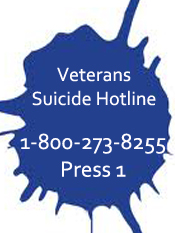 |
VA News Release
|
|
REPORTING DURING SUICIDE PREVENTION MONTH Information for Reporting on Veteran Suicides WASHINGTON – For Journalists writing about Veteran suicides and Suicide Prevention Month in September, the Department of Veterans Affairs is providing the following information for reporting on the sensitive issue of suicide. VA encourages journalists writing about this important issue to visitwww.ReportingOnSuicide.Org, for guidance on ways to communicate suicide from the independent National Action Alliance on Suicide Reporting. VETERAN SUICIDE FACTS AND DATA
SUICIDE PREVENTION MEASURES BY VA VA is aggressively undertaking a number of new measures to prevent suicide, including:
Suicide is a public issue that affects all Americans. Recent Centers for Disease Control and Prevention (CDC) data reported in April 2016 that from 1999 through 2014 (the most recent year with data available from CDC), suicide rates increased 24 percent in the general population for both males and females. A link to the report may be found at: http://www.mentalhealth.va.gov/docs/2016suicidedatareport.pdf . Other VA mental health information can be found on the VA Mental Health page at:www.mentalhealth.va.gov. Information about the Crisis Line is available at www.VeteransCrisisLine.net; Veterans in crisis can call Crisis Line at 1-800-273-8255 (press 1) or texting 838255. A Suicide prevention fact sheet may be found atwww.va.gov/opa/publications/factsheets/Suicide_Prevention_FactSheet_New_VA_Stats_070616_1400.pdf |



